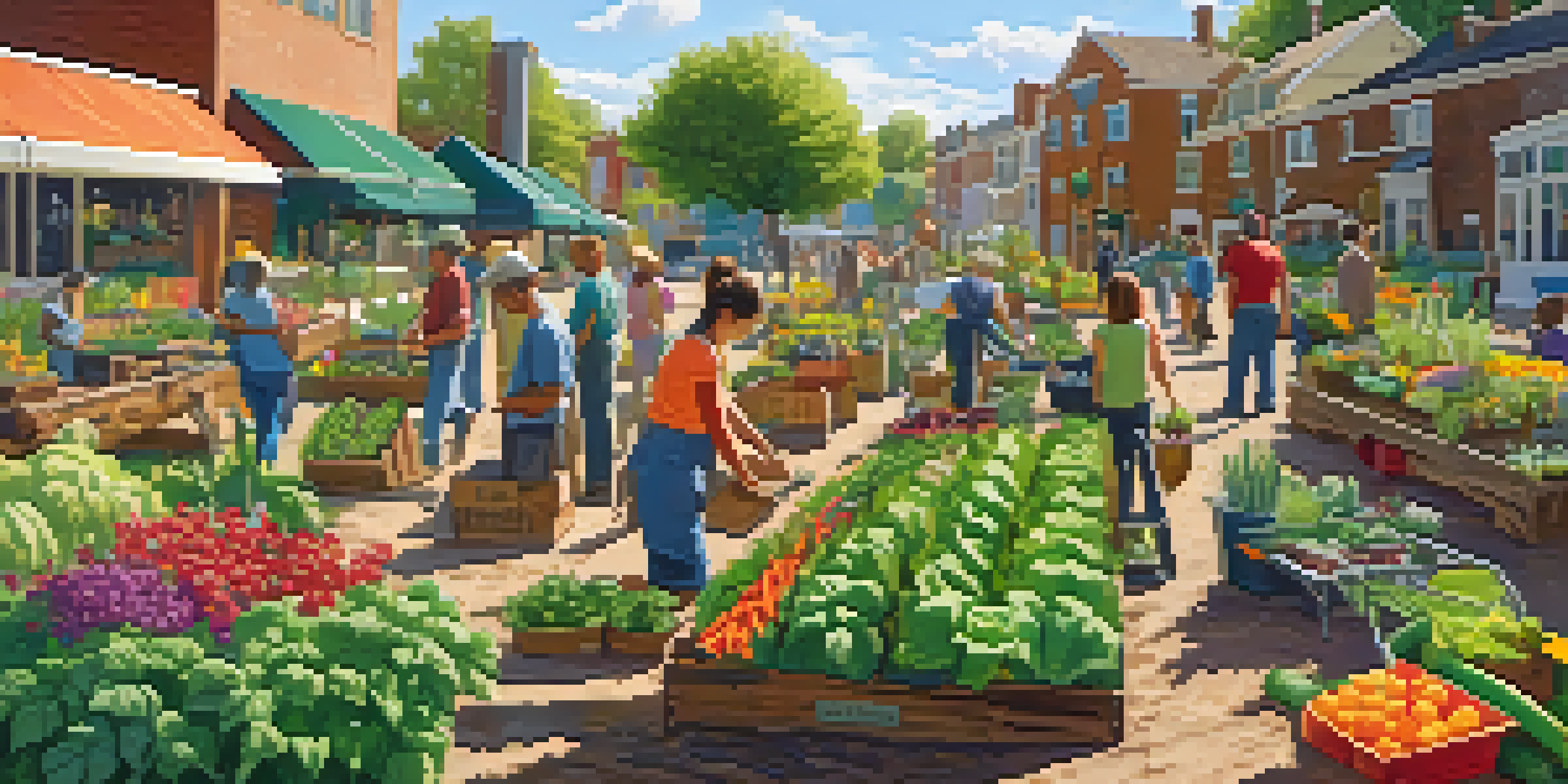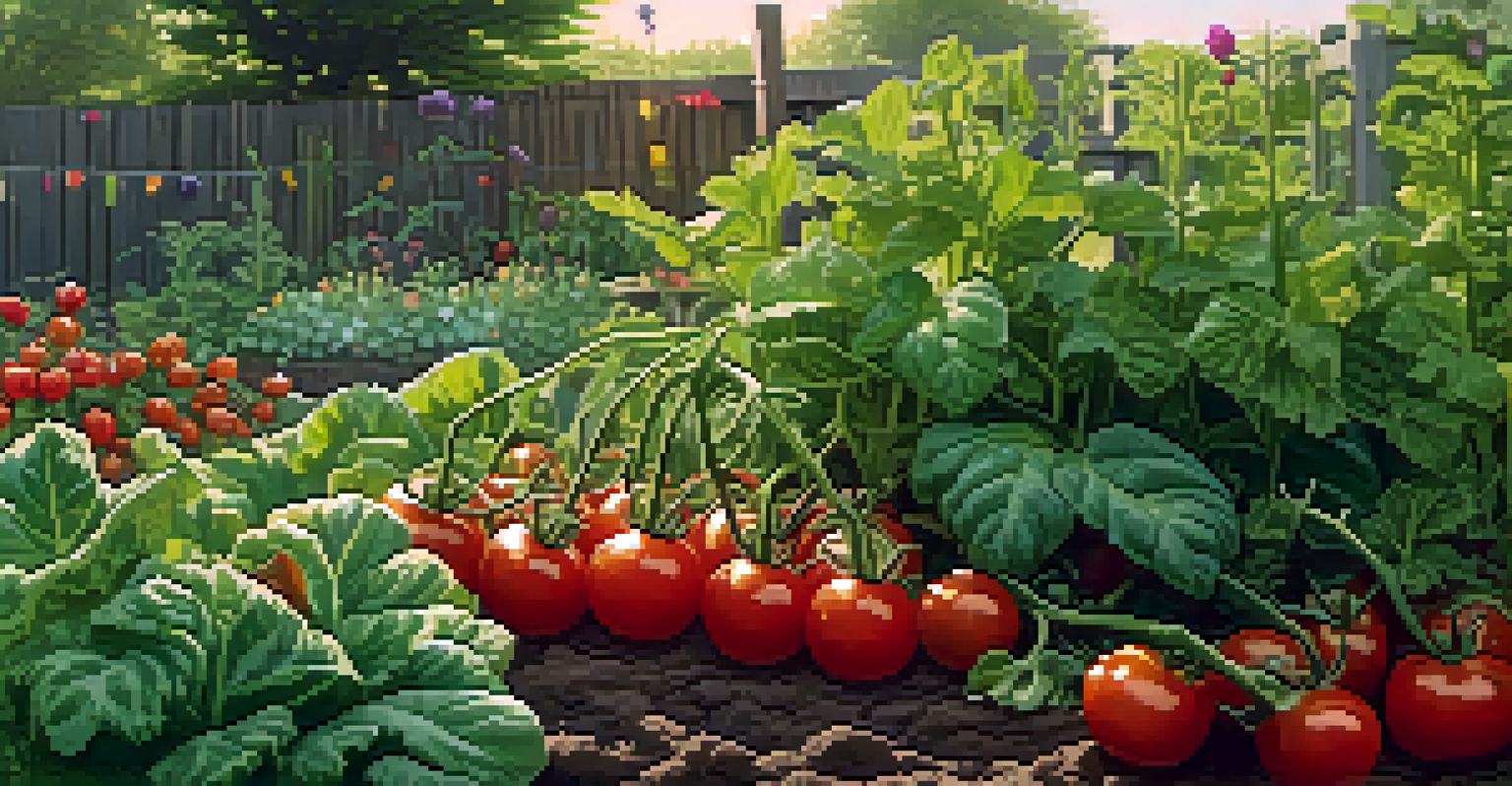The Role of Education in Community Gardening for Sustainability

Understanding the Basics of Community Gardening
Community gardening is a collaborative effort where individuals cultivate a piece of land, often in urban areas, to grow food and flowers. It’s not just about planting; it’s about creating a shared space that fosters community spirit and sustainability. Participants learn from each other, sharing knowledge and resources, which enhances their gardening skills and environmental awareness.
The greatest gift of the garden is the restoration of the five senses.
These gardens can transform vacant lots into vibrant green spaces, promoting biodiversity and improving local air quality. They also provide fresh produce, which is crucial for communities with limited access to grocery stores. This makes community gardening not only a social activity but also a vital solution for food insecurity.
Moreover, community gardens offer a platform for education on sustainable practices, such as organic gardening, composting, and water conservation. This educational component is essential for empowering individuals to make environmentally responsible choices in their daily lives, thus promoting a healthier community overall.
The Educational Benefits of Gardening Programs
Gardening programs in schools and communities serve as effective educational tools, teaching participants about biology, ecology, and nutrition. By engaging in hands-on activities, learners can see the real-time impact of their efforts, sparking curiosity and a desire to learn more. This experiential learning approach makes complex scientific concepts more accessible and relatable.

For instance, when children plant seeds and observe their growth, they not only learn about plant biology but also the importance of patience and responsibility. These programs often include discussions about the food system, helping participants understand where their food comes from and the environmental impact of industrial agriculture.
Community Gardens Foster Unity
Community gardening not only provides fresh produce but also builds a sense of community and collective responsibility.
Additionally, gardening cultivates teamwork and problem-solving skills as participants work together to tackle challenges like pests or poor soil conditions. This collaborative learning environment encourages community bonds and fosters a sense of accomplishment, which is vital for personal growth and development.
Promoting Sustainable Practices Through Education
Education plays a crucial role in promoting sustainable gardening practices that minimize environmental impact. By learning about organic gardening techniques, participants can reduce their reliance on chemical fertilizers and pesticides, which can harm local ecosystems. Workshops on composting and soil health further empower individuals to make eco-friendly choices.
Gardening adds years to your life and life to your years.
Moreover, educational initiatives can highlight the importance of biodiversity in gardening. By encouraging diverse plantings, community gardeners can create habitats for beneficial insects and pollinators, which are essential for a balanced ecosystem. This understanding fosters a deeper connection to the environment and encourages sustainable habits beyond the garden.
As participants become more knowledgeable about sustainable practices, they can share this information within their communities, creating a ripple effect. This dissemination of knowledge is vital for fostering a culture of sustainability that extends far beyond the garden’s borders.
Engaging Local Communities in Gardening Education
Engaging local communities in gardening education is essential for building a culture of sustainability. Community workshops, seminars, and hands-on training sessions can be organized to teach individuals about sustainable gardening practices. These events not only provide valuable information but also create opportunities for social interaction and networking among community members.
Collaboration with local schools can further enhance this engagement, as students can participate in gardening projects that reinforce their classroom learning. These partnerships can also involve parents and local organizations, creating a unified effort to promote sustainable practices through education.
Education Drives Sustainable Practices
Gardening programs educate participants on sustainable methods, empowering them to make environmentally responsible choices.
Additionally, social media and community events can be leveraged to spread awareness and encourage participation. By showcasing success stories and sharing tips, communities can inspire others to get involved in gardening, ultimately leading to a more sustainable future.
The Role of Technology in Gardening Education
In today’s digital age, technology has become a powerful tool for enhancing gardening education. Online platforms offer access to a wealth of resources, including tutorials, forums, and virtual workshops that make learning more accessible. This is particularly beneficial for those who may not have the opportunity to attend in-person classes.
Mobile apps can also aid gardeners by providing reminders for planting, watering, and harvesting, as well as tips for pest control and soil management. These tools not only streamline the gardening process but also encourage users to be more engaged and informed about their practices.
Moreover, technology can connect community gardeners across different regions, allowing them to share experiences and strategies. This global exchange of knowledge can inspire local initiatives and foster a sense of community beyond geographical limitations.
Challenges in Community Gardening Education
Despite its numerous benefits, community gardening education faces several challenges. Limited resources, such as funding and access to land, can hinder the establishment of gardening programs. Additionally, some community members may be unfamiliar with gardening practices, leading to hesitance or lack of participation.
Time constraints also play a significant role, as individuals may struggle to find time to engage in gardening activities alongside their busy lives. This can be particularly true in urban areas where space is limited and gardening may not be a priority for many.
Technology Enhances Gardening Learning
Digital tools and platforms improve access to gardening education, making it easier for individuals to engage and connect.
Overcoming these challenges requires innovative solutions, such as partnerships with local organizations, funding grants, and flexible program schedules. By addressing these barriers, communities can create more inclusive and accessible gardening education programs that benefit everyone.
The Future of Education and Community Gardening
Looking ahead, the future of education in community gardening is promising, with a growing emphasis on sustainability and environmental stewardship. As awareness of climate change and food insecurity increases, more communities are recognizing the importance of gardening education. This shift can lead to a greater investment in programs that teach sustainable practices.
Furthermore, as technology continues to evolve, it will play an increasingly significant role in gardening education. With the rise of virtual reality and online courses, learning about gardening can become even more interactive and engaging. This evolution can help attract a younger audience, ensuring the longevity of community gardening initiatives.

Ultimately, the integration of education in community gardening can empower individuals and communities to take charge of their food systems, promote sustainability, and foster a sense of belonging. This collective effort is essential for creating resilient communities that can thrive in the face of future challenges.